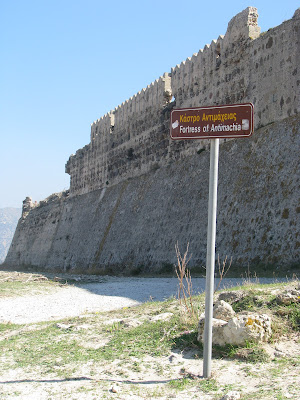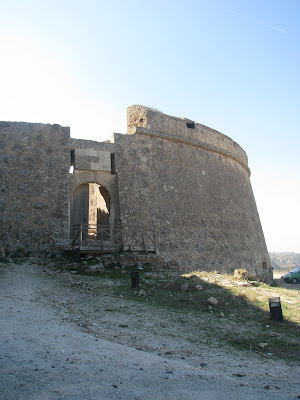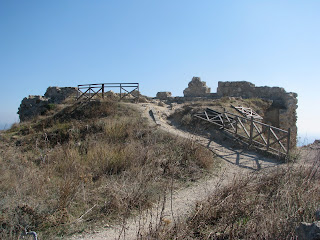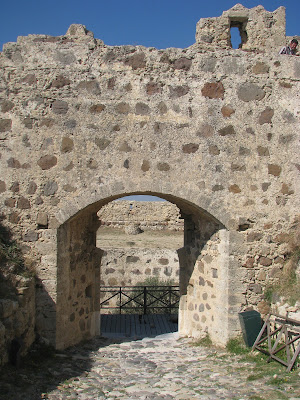
 |
| Aghios Nikolaos |
The Antimachia medieval castle is situated on a plateau roughly in the center of the island, close to the town of Antimachia. It is surrounded by a number of ravines and rough terrain and overlooks the Kardamaina coast. To reach it from Mastichari you will have to get to the Antimachia roundabout (not the airport one) and take the road to Kos. A few kilometers down the road you will see a military compound on your right and just after that you will find a road that will lead you straight to the castle. There is also a sign so you shouldn't have too much trouble getting to it. For the very courageous ones there is a path that goes up to the castle from Kardamaina, and from what i hear (I haven't actually attempted the hike yet so i don't have first hand info) it takes roughly one hour one way. The view is it seems well worth it. During the summer months I would recommend that you avoid visiting around midday as the heat would be unbearable.
 |
| Aghios Nikolaos |


The castle was rather small when it was initially built in the 14th century and was nearly abandoned. After the 1493 earthquake the knights of Saint John refortified the castle, probably because it had withstood the tremors much better than the island's other strongholds. They mainly focused on the curtain walls (i.e. the walls between the bastions) and added a great semi circular bastion in front of the unique entrance, in essence creating a barbican with the intention of repelling any invader. This architectural feature, I understand, is very rare if not unique. The arms of the Grand Master d'Aurbusson and the date of 1494 are inscribed on a cartouche situated above the second of the double entrance doors. The fortification efforts were concentrated on the northern side as that was viewed as the weakest, the south side being on the edge of a natural cliff. Inside the castle you will encounter a vast space and see a lot of cisterns. There are also two church buildings that have survived in very good condition, the Church of Aghios Nikolaos (dating from the 16th century) and the church of Aghia Paraskevi (18th century). You can also see the remains of the church of St Mary the Elemonitria. The castle was believed to be a place of refuge for the indigenous population of the nearby villages during the Ottoman and pirate raids that used to be quite common in the 15th and 16th century. It was finally abandoned in the mid 19th century as inhabitants moved to Antimachia and Kardamaina. Today, the fortress is generally speaking in a rather good state overall although it could use some renovating in some parts. Occasional cultural events are organized within the castle walls.

 |
| Aghia Paraskevi |








